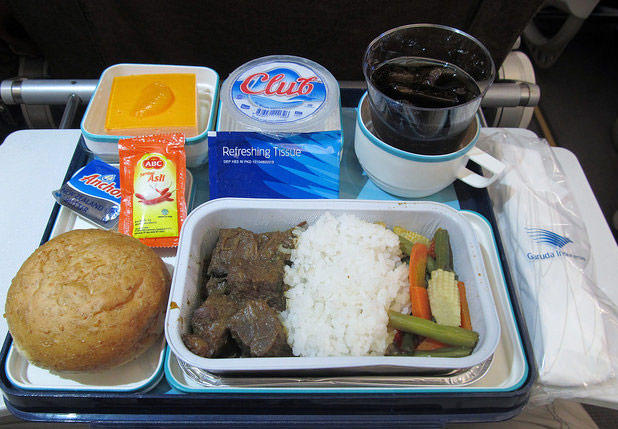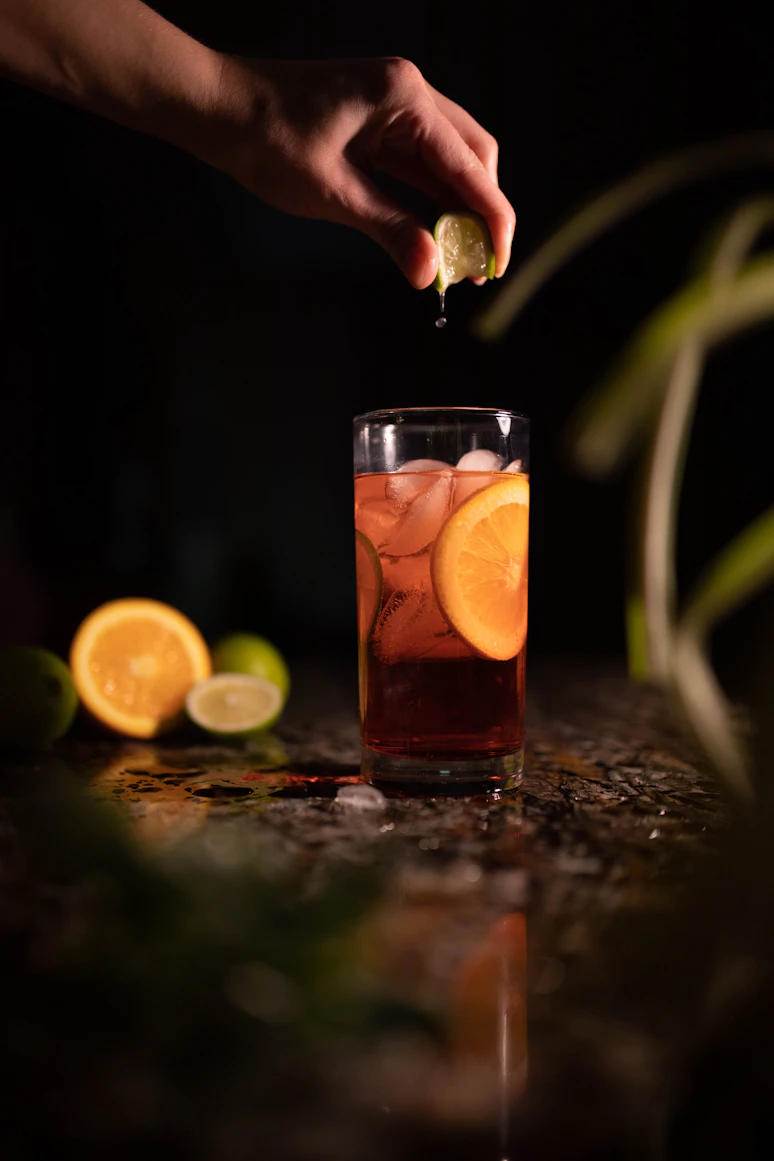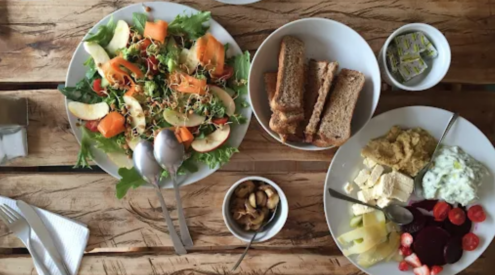Chicken or beef? If neither of these options do it for you, you’re not alone. But why is airline food just so damn bad? Lori Cohen looks to science for the answer.

Photo credit: Tracy Hunter.
There’s something inherently depressing about aeroplane food. But it wasn’t always this way. In the early days of commercial flight you’d be served up a spread of pretty fancy grub – think carved roast beef, lobster, prime ribs. Now we live in an era where this kind of luxury is reserved for business class. Those doomed to cattle class have to make do with a steaming aluminium tray that ticks the boxes of a ‘hot meal,’ but leaves you feeling meh.
The decline in quality can be attributed to cost-cutting measures. More bums in seats required airlines to find ways of prepping and heating with minimum fuss. But researchers have also discovered that while flying at higher altitudes has made for a smoother and faster ride, our taste buds have taken a knock, thanks to the numbing effects of 35000 feet and pressurised cabins.
Cabin humidity is 10 percent lower than the average home, which dries out your nose, weakening your sense of smell and hence your ability to taste. The environment also sucks any hint of moisture from the food on board.
In their quest to put the sexy back into in-flight foods, researchers at the Fraunhofer Institute in Germany have discovered the following: salty and sweet tastes take a beating at high altitudes (which is probably why your fruit always tastes like it’s unripe), while bitter and umami (savoury) survive better. There’s also data to show that a plane’s white noise suppresses some basic tastes.
The study recommended that airlines beef up flavour by using spices or adding more sugar and salt. The latter may make meals more palatable, but the changes will turn food from ‘bad’ to ‘bad for you’. In the age of Masterchef and artisanal foods, this just isn’t good enough for today’s flyer. So airlines are turning to celebrity chefs to enhance their offerings.
Even SAA has collaborated with chefs Reuben Riffel and Benny Masekwameng to create dishes for their long-haul flights. Sadly, in most cases you’ll still have to fork out for a premier seat to reap the rewards.
Top of the taste
These airlines score high on the flavour radar
- Qantas: Chef Neil Parry has introduced a range of healthy meals (think fish, salads and steamed veg) across all flight classes.
- Qatar: Who needs one star chef when you can have four? Qatar introduced its Culinary World Menu last year for first and business classes (chefs Nobu Matsuhisa, Tom Aikens, Vineet Bhatia and Ramzi Choueiri have all contributed). A highlight? A classic mezze of hummus, tabbouleh, muhammara and lahim bil agine.
- Singapore Airlines: Its Book The Cook service for premier classes allows you to place your order 24 hours before, with a choice of over 60 gourmet dishes.
This article first appeared in the November 2014 issue of Getaway magazine.

















